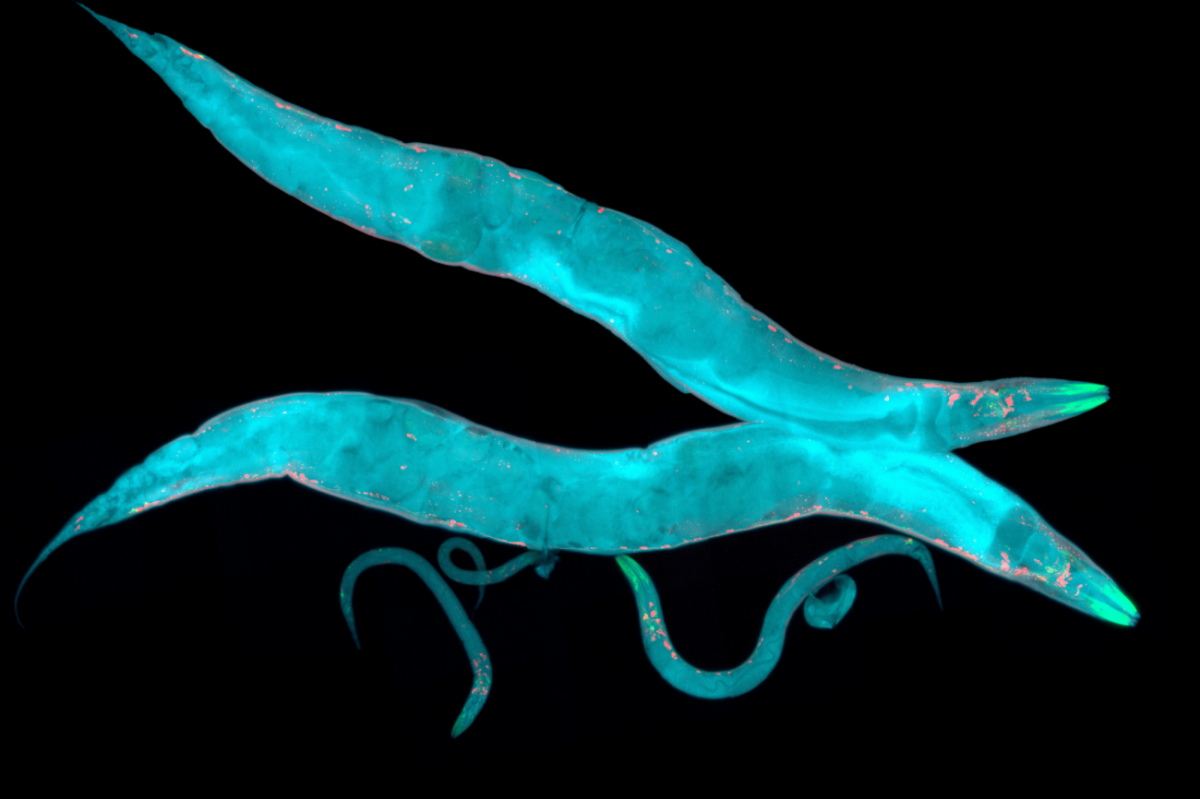Tiny Worms Got Stoned for the Benefit of Science
Posted on Categories Discover Magazine

Researchers have dosed microscopic hydra with cannabinoids to observe their feeding habits, and in 2000, a study at the University of Wisconsin-Oshkosh injected THC into the spinal fluid of rats and set them loose on some chocolate cake batter. The conclusion? The active ingredient in marijuana had effectively given munchies to the THC-injected rats, which ate more greedily.
Now a new study has extended the investigation to one of the best-studied organisms on the planet, Caenorhabditis elegans, a type of roundworm frequently used in lab experiments. Since around two-thirds of human disease genes are present in the worm, and about one-third of human genes overall, the results could open the door to further research into the human nervous system.
Experimentally-Induced Munchies
But first, the scientists from the University of Oregon Institute of Neuroscience had to answer some basic questions about the worms’ tiny nervous systems.
The worms normally feed on bacteria from decaying plant matter and, after they’re born, develop a preference for the more nutritious varieties. The researchers singled them out and gave them anandamide, a cannabinoid found in worms as well as mammals. Then they fed the worms five different bacterial entrées and measured how aggressively they pumped them into their bodies.
As with humans, the cannabinoid increased the worms’ interest in the richer food and decreased that in the bland.
Read More: The Experiments Revealing How Marijuana Could Treat Dementia
Hedonistic Worms
For the second experiment, the researchers set up a “T-Maze” that would allow the worms to wriggle along and decide between a low-nutrient pile of bacterial yum or a high-nutrient one. In one iteration of the course, the scientists added a paralytic agent to the bacteria, to test whether the worms would sniff out the tastier pile on their first try. Either way, however, the worms received a “foodless” appetizer laced with anandamide before setting out.
Again, they concluded that the cannabinoid led to richer, “hedonic” eating, as if the worms were gorging themselves for pleasure. The researchers also found that smell played an essential role in worm hedonism, since those with a smell-reducing genetic mutation were far more conservative in their consumption.
Read More: Medieval Friars Were Filled With Worms
What Causes the Munchies?
The munchies process starts, the paper proposes, with activation of certain receptors in the endocannabinoid system by either an external (THC) or internal cannabinoid. From there, the system tunes the smell neurons to emphasize food, which triggers appetite.
The endocannabinoid system triggers hunger when the body is low on resources. That’s why users of marijuana often feel a hunger for high-sugar, high-fat foods that can’t be sated, no matter how much they eat. The system also plays an important role in obesity, and so the one-millimeter-long worms could one day aid research in this area.
Read More: If Marijuana Gives You an Upset Stomach, You’re Not Alone